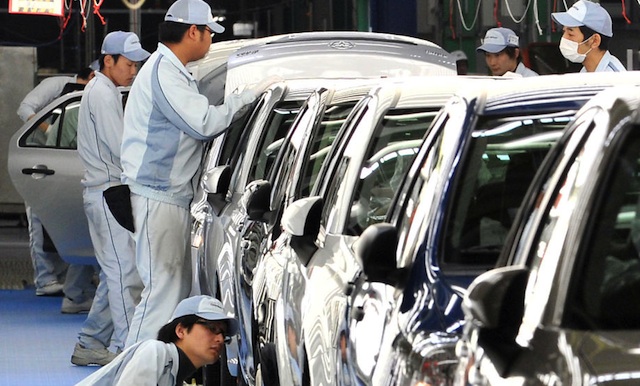
The Asian automotive industry last year built twice as many passenger cars as Europe, three times more than North America, and almost six times more than South America.
Plants in China, Japan, India, Indonesia, Malaysia, South Korea, Thailand, Taiwan, and Iran accounted for most of the 33.3 million cars built in the wider Asian region. Australia (Toyota, Ford, Holden) last year built 185,427, down from 400,000 in 2004.
International figures show plants in Asia built more than half the 65.4m cars produced worldwide last year. China alone built just over 18 million cars, up from 13.8 million in 2009 when it overtook the United States as the world’s biggest producing carmaker. Japan supplied 8.1 million last year, South Korea 4.1m, India 3.1m, Thailand 1.1m, and Indonesia 935,000.
China’s automotive output in 2013 was up 16.5 per cent on 2013. Indonesia and Thailand were powerhouses, too, up 24.4 per cent and 18.8 per cent respectively.
Europe built 17.3m passenger cars and North America 10.4m. The main European contributor was Germany with 5.4m, followed by Spain (1.7m), UK (1.5m), France (1.4m), Czech Republic (1.1m), Slovakia (1.0m). Slovakia’s output made it the biggest carmaker per head of population in the world. Outside Europe, Russia built 1.9m.
South America built 3.3m, almost all from Brazil’s 2.7m and Argentina’s 506,000 but with contributions from Venezuela and Colombia.
Production from car plants in Thailand – where New Zealand gets almost all its light commercial vehicles – accounts for 10 per cent of the country’s gross domestic product and employs more than 500,000 people.
Japan remains the biggest exporter of new vehicles to NZ but Thailand is the next biggest, followed by South Korea.
Thai-built workhorses like the Toyota Hilux, Holden Colorado, Mazda BT-50, Ford Ranger, Mitsubishi Triton, and Izusu ute are landed in NZ under the free-trade agreement between the two countries.
Thailand is soon likely to overtake Japan as the most prolific exporter of motor vehicles to Australia, says a report across the Tasman.
Thai automotive exports to Australia have more than doubled in nine years. Japanese carmakers have switched to large-scale Thai production to cut landed costs of vehicles and also take advantage of free-trade agreements between Thailand and Australia.
The Japanese companies have built mirror-image factories in Thailand, transplanting not only their production equipment, but also their quality systems and work ethic.
